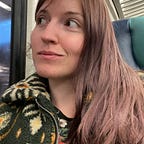The Science Behind Falling Asleep
A 3-minute exploration of what’s between wake and sleep.
When it comes to our favorite rituals, sleep might be the most important one. It can seem like the easiest one too: we don our pajamas, brush (and floss!) our teeth, drink a glass of water or milk, and snuggle into bed for some light reading. Then, we close our eyes and wait for Mr. Sandman to fly us off to dreamland.
We’re all intimate friends with sleep — after all, the majority of people spend anywhere between six to nine hours a day in this vulnerable state. But how much do we really know about it? Without a proper understanding of how sleep works, the act of dozing off can seem like magic. One moment we’re awake, the next we’re not. Is it really that simple?
As it turns out, the ritual of sleep, and what causes us to cross from wakefulness to dreaming, isn’t as straightforward as we might believe.
The brain is a complex organ, and sleep is a complex process of the brain. Of course, we already know what happens when we sleep. As we start to doze, we slip into the first stage of non-REM sleep, a “short period,” the National Institute of Health writes, when “your heartbeat, breathing, and eye movement slow, and your muscles relax with occasional twitches.” As we progress into REM sleep, our bodies work to refresh the brain and process any lingering information from our day. This turns short-term data into memories.
But what gets us from alertness to that first stage of non-REM sleep? What causes the transition from reading in bed to dozing off on the pages of our favorite novel? Researchers from the University of Maryland School of Medicine may have discovered the answer, according to a journal article published in Nature Communications.
In 2016, while running some experiments on lab mice, the researchers potentially identified what causes the trigger of sleep in humans: a “group of [ion] channels” in the hypothalamus. Ion channels are made up of protein sets and connect to each other to create pathways between cells. In this study, researchers observed a specific type of channel: Big Potassium (BK) channels.
BK channels are found in neurons in the brain. Neurons use these channels to communicate with other neurons. When a neuron receives information, the BK channel regulates it and passes the received activity to a region of the hypothalamus called the suprachiasmatic nucleus (SCN). The SCN is in charge of our sleep (circadian) rhythms, often making us feel alert or tired based on our exposure to sunlight.
University of Maryland researchers found that while the BK channels in the SCN are open during the day, they “inactivate” at night, blocking neural activity from reaching the SCN. This inactivity of critical BK channels alerts the SCN that we’re ready for sleep and helps us slip into the first stage of our non-REM cycle.
BK channels in the hypothalamus aren’t solely responsible for our transition. The body tracks our need for sleep like a car gauge tracks our need for gas. BK channels, non-REM sleep, and our natural sleep cycle work together to make sure we get the rest we need. This may explain why we sometimes nod off when exhausted, no matter how hard we fight it or how much coffee we drink. However, researchers at the University of Maryland believe BK channels are critical to the process. They “play a key role in regulating the ‘switch’ between sleep and wakefulness” (source: EurekAlert!) and provide intriguing new details in the quest to better understand ourselves.
The brain is complex; the mechanics of sleep even more so. But research around the role BK channels play in our nightly ritual may offer insight into future treatment possibilities for sleep disorders like insomnia, as well as shed some light on that strange moment of sleep we experience, when we tip over the edge into an abyss of unconsciousness.
Want more? Check out the original study published in Nature Communications: BK channel inactivation gates daytime excitability in the circadian clock.
